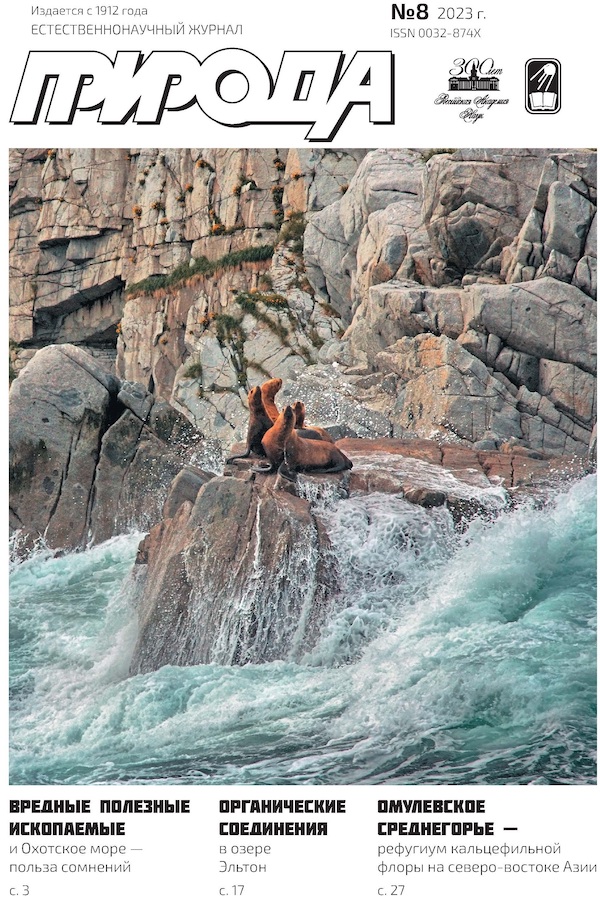Harmful Mineral Wealth and the Sea of Okhotsk: The Benefits of the Doubt
- 作者: Berman D.I1
-
隶属关系:
- Institute of Biological Problems of the North, Far Eastern Branch of the Russian Academy of Sciences
- 期: 编号 8 (2023)
- 页面: 3-16
- 栏目: Articles
- URL: https://journals.eco-vector.com/0032-874X/article/view/627824
- DOI: https://doi.org/10.7868/S0032874X2308001X
- ID: 627824
如何引用文章
详细
The article considers possible environmental consequences of the exploitation of primary gold and copper deposits in the river basins of the Sea of Okhotsk (Magadan Oblast, Russia). The extraction and processing of the ores involve the use of extremely aggressive chemicals and the presence of large volumes of toxic waste. Even the use of modern, gentle technologies could not guarantee the complete absence of salvo discharges for several reasons: Firstly, due to the high seismic hazard of the territory (possible earthquakes with a magnitude of 6–7). Secondly, because of the permafrost that covers the region (the rate of its melting in the absence of a global warming forecast cannot be correctly assessed). Such risks cannot be paid off , since under force majeure circumstances toxic waste will end up in the Sea of Okhotsk. However, in 2022, the Sea of Okhotsk yielded 47 of the 73 % of Russia’s entire annual catch of fi sh and other seafood caught in the Far East. Any doubts regarding the environmental consequences of any project aff ecting the ecology of the Sea of Okhotsk should be interpreted exclusively in favor of the sea.
作者简介
D. Berman
Institute of Biological Problems of the North, Far Eastern Branch of the Russian Academy of SciencesMagadan, Russia
参考
- Халбашкеев А. Намоем золота? Какое будущее ждет россыпную золотодобычу. Добываемая промышленность. 2021; 5(29): 86–90.
- Важенин Б. П. Уточнение параметров Артыкского землетрясения 1971 г. в Якутии с использованием палеосейсмогеологической методики. Интернет-журнал «Технологии техносферной безопасности». 2012; 6(46).
- Матвеева Т. Н., Громова Н. К., Ланцова Л. Б. Исследование адсорбции таннинсодержащих органических реагентов настибните, арсенопирите и халькопирите при флотации комплексных золотосодержащих руд. Физико-технические проблемы разработки полезных ископаемых. 2016; 3: 134–142.
- Eisler R., Wiemeyer S. N. Cyanide hazards to plants and animals from gold mining and related water issues. Rev. Environ. Contam. Toxicol. 2004; 183: 21–54. doi: 10.1007/978-1-4419-9100-3_2.
- UNEP/OCHA. The Cyanide Spill at Baia Mare, Romania: Before, During and After. P. Csagoly (ed.). 2000. The Regional Environmental Center for Central and Eastern Europe.
- Ширков Э. И. Эколого-экономическая эффективность использования природно-ресурсного потенциала Охотского моря. Пространственная экономика. 2010; 3: 49–67.
- Жилкин А. А., Иванов В. П., Пальцев В. Н., Зиланов В. К. Международное сотрудничество в изучении и использовании рыбных ресурсов Каспийского моря. Научное обеспечение социально-экономического развития и экологической безопасности АПК. М., 2011; 40–54.
- Максаковский В. П. Мировое рыболовство. География. 2002; 11: 25–28.
- Картамышева Е. С., Иванченко Д. С. Последствия добычи нефти и газа на Каспийском море. Молодой ученый. 2017; 25(159): 113–117.
- Малашенков Б. М., Акчурин Л. И. Структурные изменения в сфере государственного регулирования разработки нефтегазовых месторождений на шельфе США. Государственное управление. Электронный вестник. 2020; 79: 51–67.
补充文件








